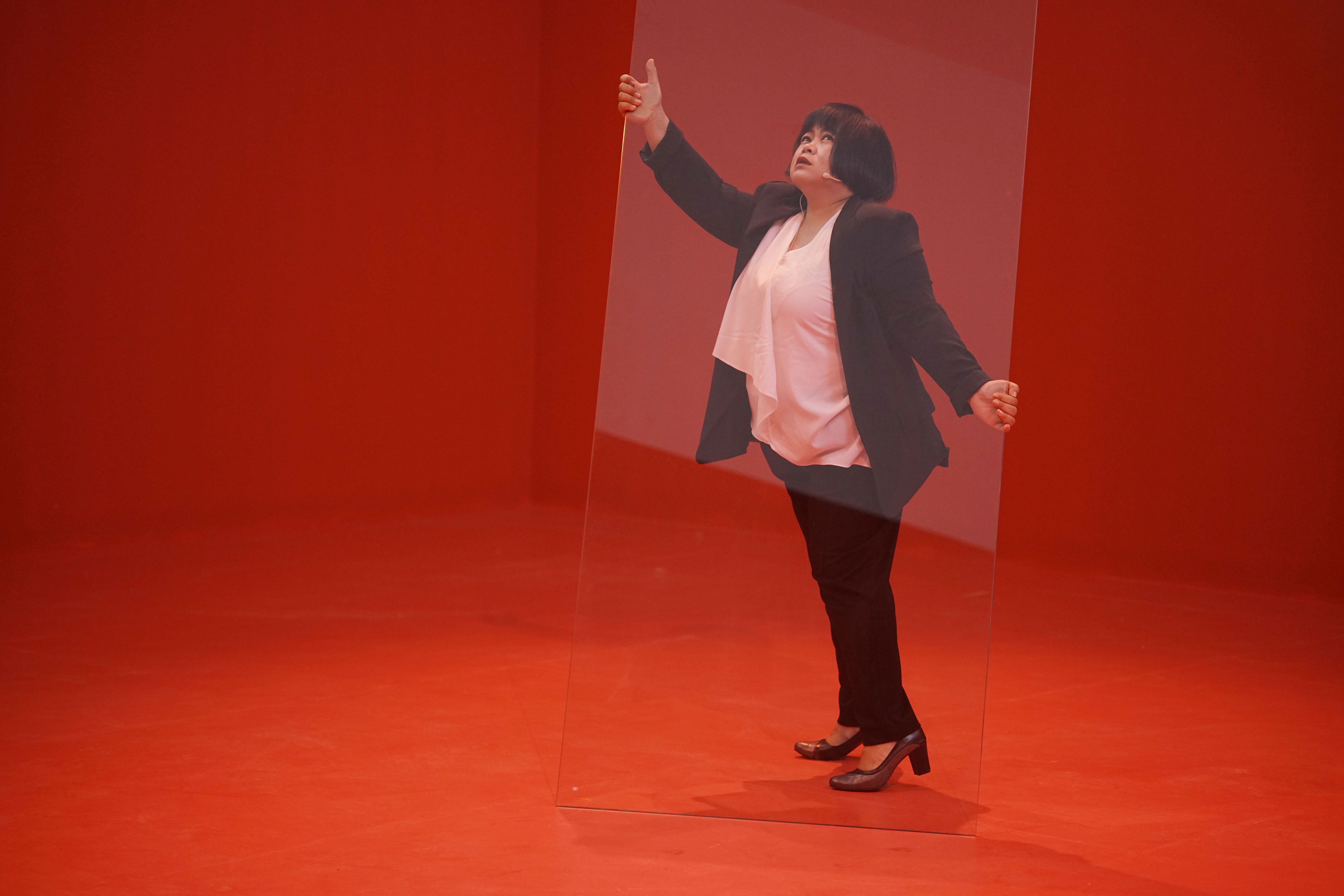Shows
Melati Suryodarmo’s “I Love You”


For acclaimed Indonesian performance artist Melati Suryodarmo’s first comprehensive solo exhibition in China, hosted at ShanghArt Beijing, she offered a group of works that represent her two-pronged practice, which comprises photography and durational performance art—the latter being her key pursuit, and the main focus of the show.
The exhibition was split across four areas. Behind the gallery’s reception desk was a triptych of large photographs. In each of these images, Suryodarmo is seen crouching and twisting, while in one, she seems to be shouting. The actions are blurred together in the individual shots, emphasizing her movement—the result of the artist’s use of an extended shutter speed. The nondescript, photography-studio backdrop to Suryodarmo’s gestures reference the classical portrait genre. In this way, she uses the medium of photography to expand her exploration of performance art; for one, asking: how do sequences of movement communicate and engage? As viewers, we are also left with the question of how her practice can or cannot be situated in Western narratives of art and its history.
With these photographs easy to miss, it felt as if the exhibition really began when one entered a white-walled room to intermittent thuds emitting from a source initially out of sight. Visible first were a number of photographs documenting a performance, which also figured in a video projected in a separate space. Transaction of Hollows (2016) features Suryodarmo, dressed in a white suit and heeled boots, firing arrows from her bow into the walls of a white room. The echoing impact of the arrows layers tension each time they strike the wall and, after each hit, we wait for the impending sound, which arrives only after Suryodarmo has finished methodically preparing for the shot. Drawing on Javanese archery traditions, which teach that the preparation is as important as hitting the target, Suryodarmo meditates on contemporary societies’ relentless pursuit of perfection, and the idea of the journey being more important than the empty utopia we are told to aim for, enjoining the audience to do the same.
At the heart of the small show was another sectioned-off room, with red walls. Here, three times over the exhibition’s almost-one-month duration, Suryodarmo enacted the performance, I Love You (2007). For the work’s entire five-hour duration, Suryodarmo, dressed in a black suit and black heeled boots, supports a 40-kilogram pane of clear glass. The artist’s actions are slow and deliberate—she is clearly conscious of her long and shorter steps, and there is intent behind her twisting and contorting. In moments of understandable exhaustion, she lies on the floor, but at no point is the glass not propped up. “I love you” are the three words that Suryodarmo says over and over at random intervals. Questions abound: who might she love? Does this love mirror the weight of the glass? Is she trying to prove the depth of her feelings? Without overt references or further clues, the audience is left to focus on Suryodarmo’s physical actions, placing the metaphorical resonances of the performance in the realm of their own experiences.
Across from the red box was the last part of the exhibition. On one wall were four photographs from the series Tomorrow, As Purposed (2018). Again, photography and performance meet. Beginning as a dance-theatre piece inspired by Shakespeare’s Macbeth and the power of prophetical exclamations, the images were captured during a staging of the performance. Two of these show tension-filled moments of dance, and the remaining two are of figures caught in other unspecified moments. These are the exhibition’s only works that do not portray Suryodarmo, and appear relatively generic, as if they could be drawn from any dimly-lit performance, with none of the challenge that the other pieces pose, suggesting an area of Suryodarmo’s practice that is still developing.
It’s not surprising that with Suryodarmo present and performing I Love You, the whole exhibition took on a different weight. Even when she was gone, the glass pane, placed within the space, marked her trace and stood as a potent reminder of the presence of the performance. Ultimately, however, there was a disparity between the values of her performative actions and the photographs that document the gestures. With the strength of the show coming primarily from the former, Suryodarmo was showcased as an artist at the forefront of conceptualizing and executing poignant performance art.
Tom Mouna is ArtAsiaPacific’s Beijing desk editor.
Melati Suryodarmo’s “I Love You” is on view at ShanghArt Beijing, until May 14, 2018.







